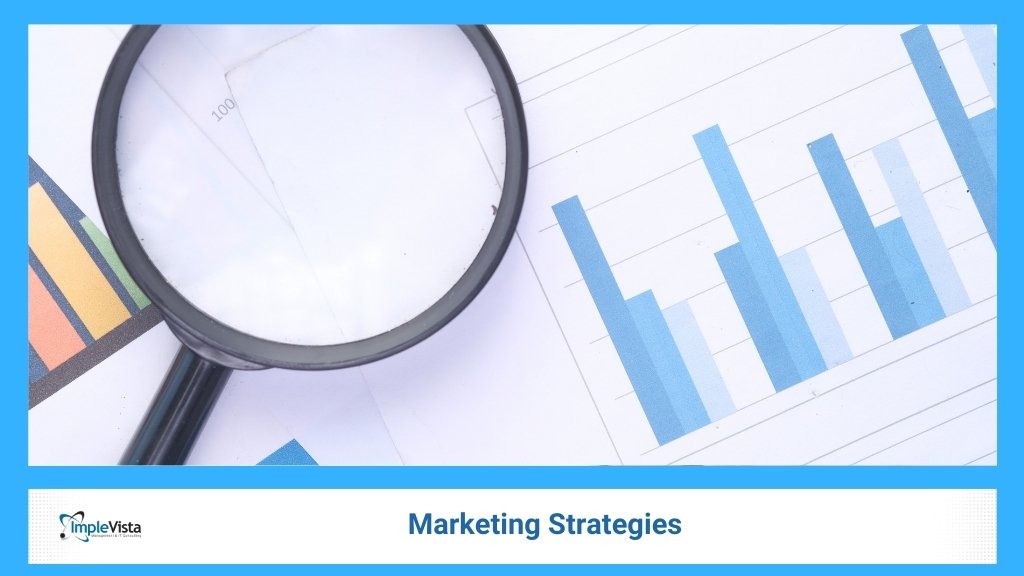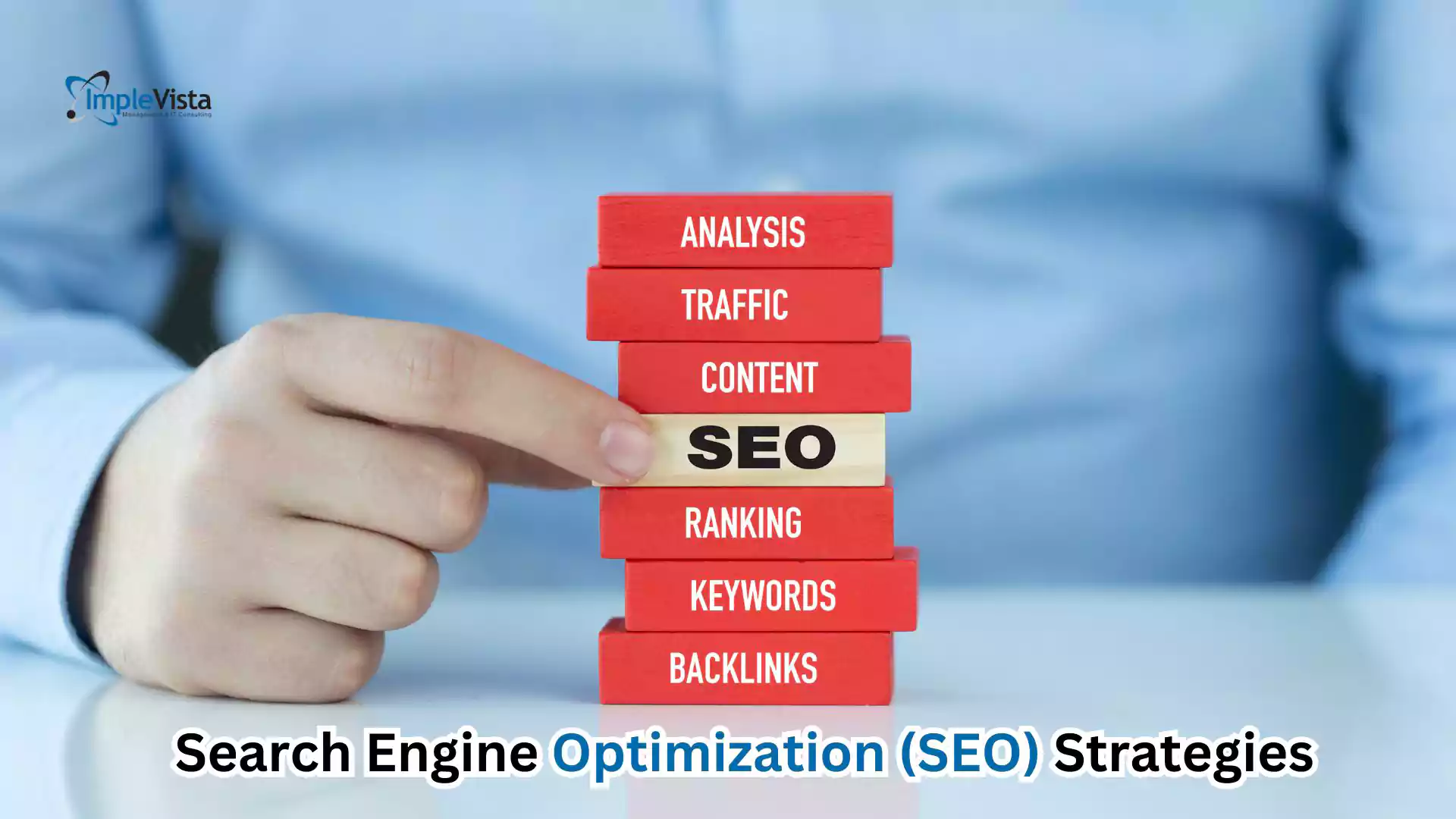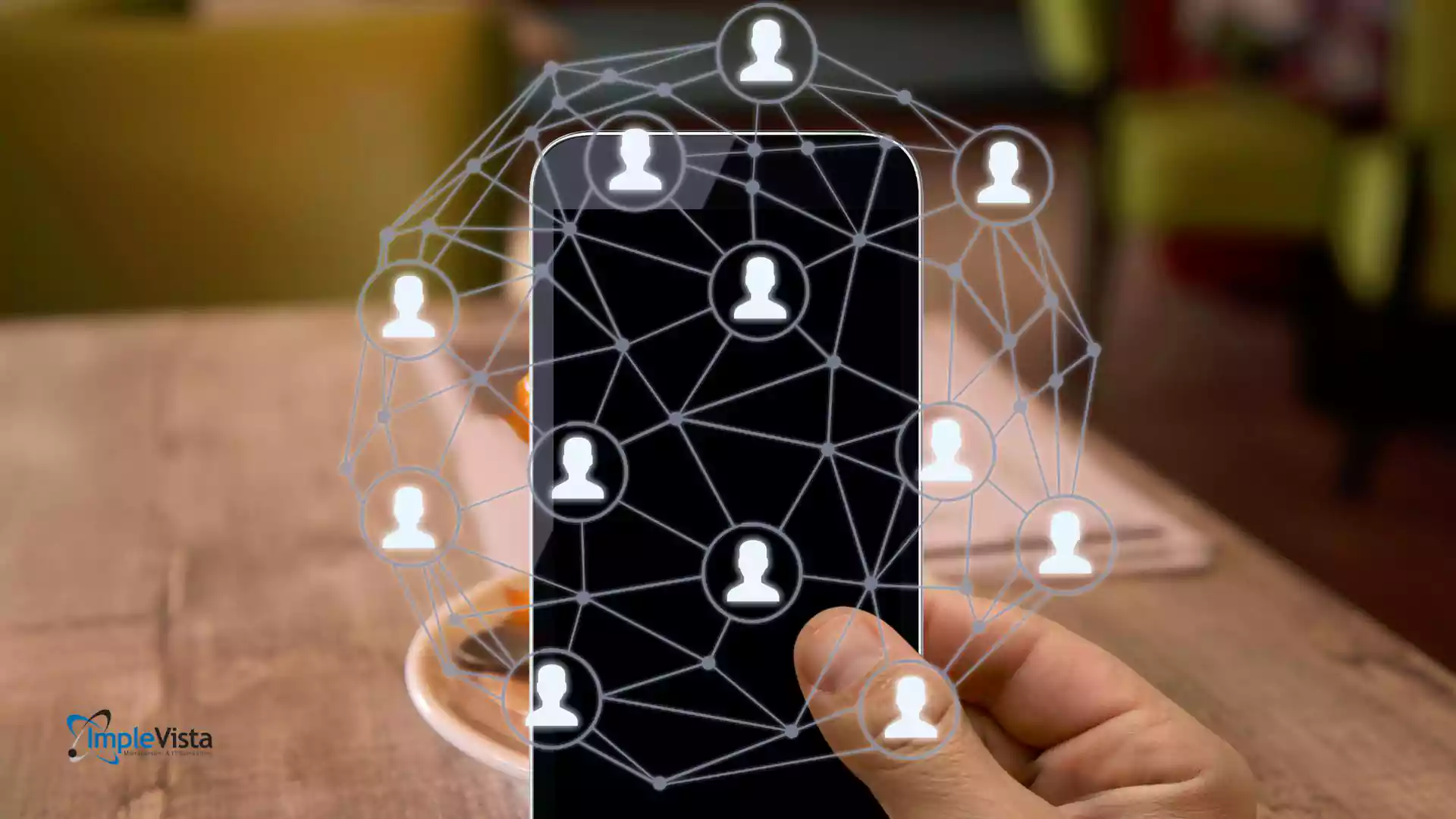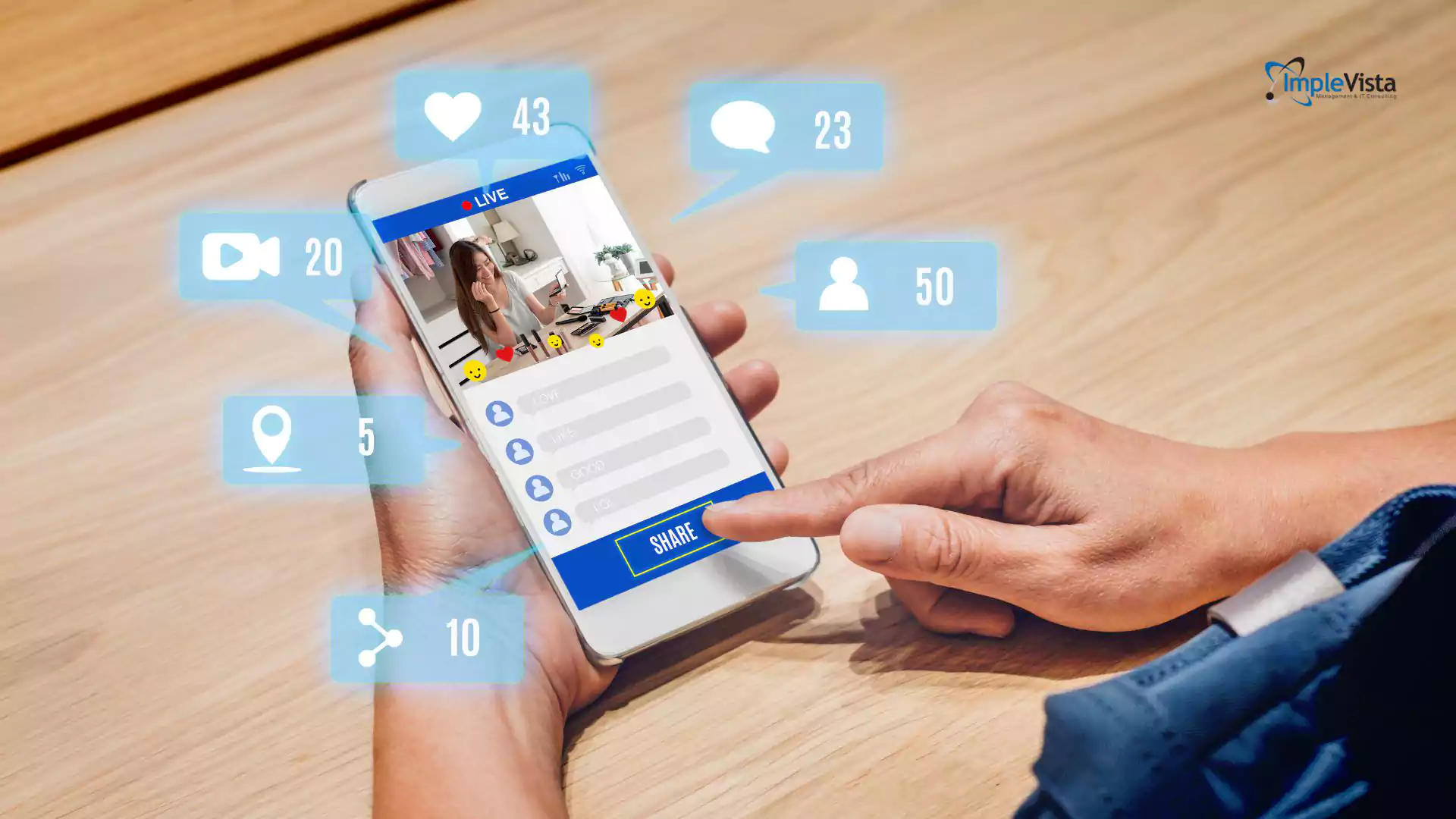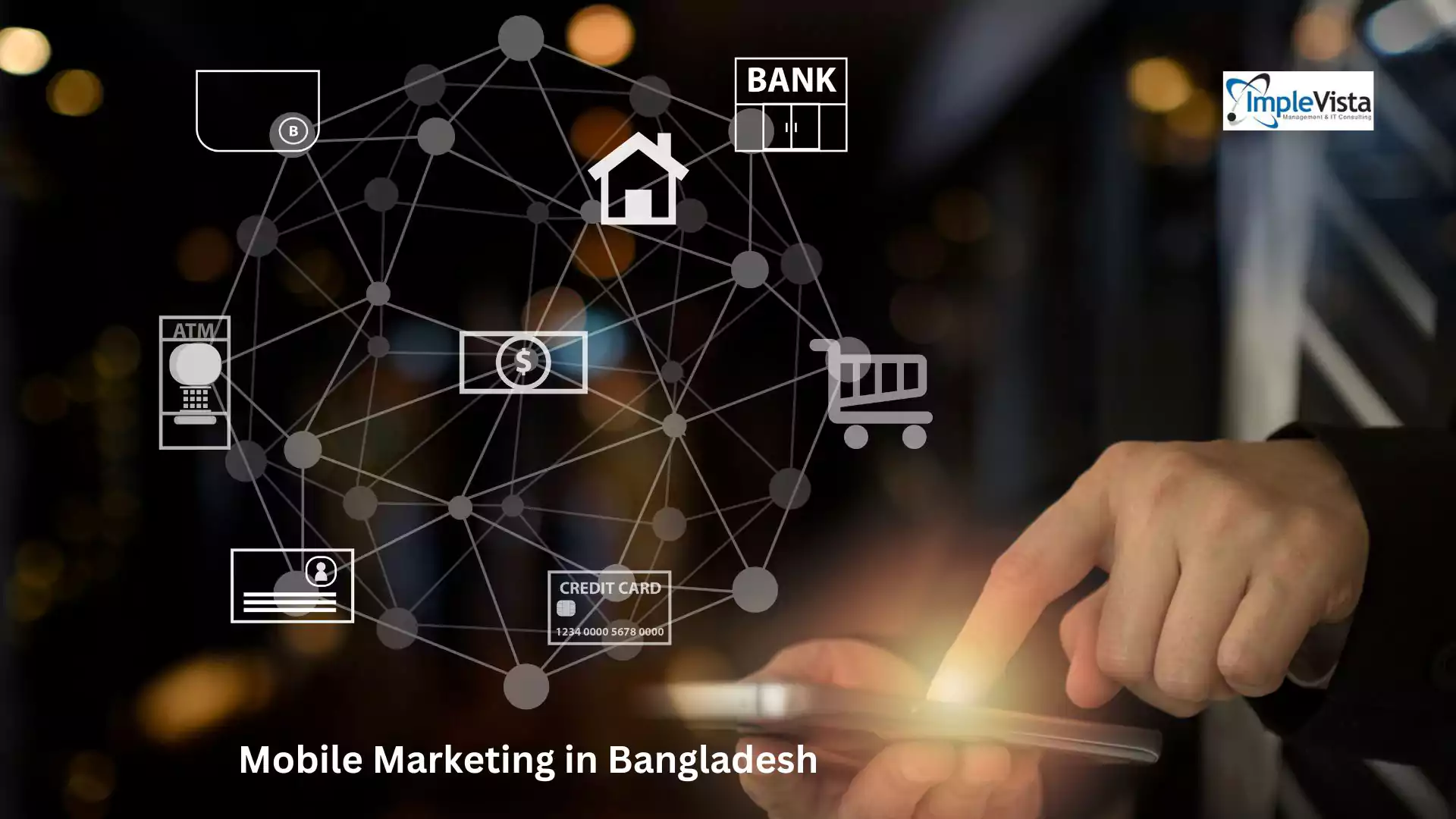In today’s digital world, businesses must deploy smart marketing strategies to stand out. This article explores 20 effective and innovative approaches that can help companies rule the digital world. From optimizing for search engines to leveraging cutting-edge technologies, these marketing strategies cover everything a modern business needs.
By combining proven techniques like SEO and social media marketing with emerging trends like AI-driven personalization and immersive AR/VR experiences, brands can dramatically increase visibility, engagement, and conversions. Let’s dive into each strategy in detail, with real-world insights and examples.
Marketing Strategies to Rule the Digital World
In today’s hyper-connected environment, businesses must adopt powerful and adaptive marketing strategies to stand out in the digital world. The first essential strategy is building a strong online presence through a well-optimized website and active social media profiles. A visually appealing, mobile-friendly website combined with consistent branding across platforms helps attract and retain visitors.
Search engine optimization (SEO) remains crucial for increasing visibility, ensuring that potential customers can easily find your products or services. Additionally, content marketing plays a vital role; producing valuable blogs, videos, and infographics not only educates audiences but also establishes your brand as an authority. Another effective tactic is leveraging data-driven insights to understand customer behavior and personalize campaigns.
Tools like analytics dashboards and marketing automation platforms allow businesses to deliver targeted messages at the right time, improving engagement and conversion rates. Paid advertising, including pay-per-click (PPC) and social media ads, provides quick visibility and helps reach specific demographics with precision. Influencer marketing has also become a dominant force, enabling brands to tap into established communities and build trust rapidly.
Email marketing, despite being one of the oldest digital tools, continues to be highly effective when used with segmentation and personalized content. Finally, maintaining strong customer relationships through responsive communication and consistent value delivery is key to long-term success. By combining these strategies and staying adaptable to emerging trends, businesses can confidently navigate and dominate the digital landscape.
1. Search Engine Optimization (SEO)
Search Engine Optimization (SEO) is a cornerstone of digital marketing. By optimizing your website and content, you increase visibility on search engines so potential customers can find you first. Key elements include:
- Keyword Research: Target relevant search terms that customers use (especially in the digital world, long-tail keywords can drive highly motivated traffic).
- On-Page Optimization: Craft compelling title tags, headers, and content that naturally incorporate primary keywords like marketing strategies.
- Technical SEO: Ensure your site loads fast, is mobile-friendly, and has proper meta tags and site structure for crawlers.
- Quality Backlinks: Earn links from authoritative sites to boost your rankings.
With SEO, even small businesses can compete globally. For instance, nearly 29% of marketers report SEO as a top strategy in their campaigns. Remember, the first page of Google captures most clicks – in fact, 75% of users never scroll beyond it. Effective SEO means more organic traffic and a strong foundation for all other marketing efforts. Implevista provides expert [SEO services] on our website to help improve rankings and drive qualified traffic.
2. Local SEO
Local SEO focuses on optimizing your online presence for geographic searches. This is awesome for businesses targeting customers in specific areas. Tactics include:
- Google Business Profile: Optimize your listing with accurate info, images, and updates.
- Local Citations & Directories: Ensure your business name, address, and phone number (NAP) are consistent across directories like Yelp or Bing Places.
- Localized Content: Create blog posts or pages around local topics (e.g., “best product in Dhaka”).
- Mobile Optimization: Since many local searches happen on mobile, ensure your site works perfectly on smartphones.
For example, a case study from Implevista shows how local SEO made a huge impact: a Dhaka restaurant saw a 50% increase in reservations within six months by optimizing their local search presence. This highlights how a tailored local strategy can rule the digital world within a community.
3. Content Marketing
Content marketing builds your brand’s authority by providing valuable information. Awesome content can turn browsers into buyers. Key approaches:
- Blogging & Articles: Regularly publish in-depth, original articles on topics your audience cares about. Long-form guides and how-tos perform especially well; only 3% of brands post articles over 2,000 words, so detailed content stands out.
- SEO-Optimized Content: Use keywords (like marketing strategies and digital marketing) naturally. Content that ranks well drives organic traffic long-term.
- Rich Media: Integrate images, infographics, and videos within articles. For example, posts with videos attract ~70% more traffic than those without.
- Content Upgrades: Repurpose and update your best content (e.g., turn a blog post into a video or infographic) to extend its life.
Research confirms content marketing is powerful: 72% of businesses say content marketing boosts lead generation, and it costs 62% less than traditional marketing for roughly 3× as many leads. Engaging content not only educates customers but also nurtures loyalty.
4. Social Media Marketing
Social media marketing is essential for building brand awareness and community engagement. The digital world relies heavily on social platforms, and 93% of marketers use social media for business. Key tactics include:
- Platform-Specific Strategies: Tailor content to each network (e.g., Instagram Reels, LinkedIn articles, TikTok videos).
- Short-Form Video: Prioritize quick, snackable videos. In 2025, brands are focusing on short reels and TikToks to capture attention.
- Micro-Influencers: Collaborate with influencers who have smaller but engaged followings. Studies show micro-influencers can boost authenticity and reach niche audiences.
- Community Engagement: Encourage comments, shares, and messages. Respond promptly to build rapport and trust.
In today’s fast-paced digital space, being active and authentic on social channels keeps your brand top-of-mind. As Park University notes, social media marketing remains a powerful channel, emphasizing live streams and interactive stories to humanize your brand.
5. Pay-Per-Click (PPC) Advertising
Paid advertising (PPC) like Google Ads or social media ads delivers immediate, targeted traffic. Key strategies:
- Targeted Keywords: Bid on high-intent search terms so your ads appear when customers are ready to buy.
- Compelling Ad Copy & Design: Craft ads that match user intent and stand out (bold headlines, clear calls-to-action).
- Landing Page Optimization: Ensure clicks land on pages optimized for conversions (relevant offers, clear forms or purchase buttons).
- A/B Testing: Continuously test ad variations (headlines, images) to improve click-through and conversion rates.
PPC is highly measurable and controllable. In fact, with good optimization a PPC campaign can achieve 200% ROI – meaning $2 return for every $1 spent. Remarketing ads (showing ads to previous visitors) also boost conversions by reminding users of your brand. Overall, PPC enables precise reach and quick wins that complement organic efforts. Learn more about Implevista’s PPC campaigns on our PPC Advertising page.
6. Email Marketing
Email marketing remains one of the most effective channels for nurturing leads and driving sales. Even in the age of social media, well-crafted emails reach customers personally. Best practices:
- Segmentation: Divide your list by demographics or behavior to send relevant messages (e.g., “new subscriber” vs. “loyal customer”).
- Personalization: Use the subscriber’s name and tailor content to their interests. Personalized emails have higher open rates.
- Valuable Content: Send a mix of educational and promotional content. Newsletters, special offers, and product updates keep your audience engaged.
- Automation: Set up autoresponders and drip campaigns. For example, a welcome series for new signups can increase loyalty.
Email delivers strong results: HubSpot reports that email marketing generates 2.8% conversion rates for B2C brands, the highest among channels. It’s cost-effective and scalable – once the campaign is built, sending thousands costs almost nothing. For digital world domination, email keeps your brand in customers’ inboxes and minds.
7. Influencer Marketing
Influencer marketing leverages trusted personalities to promote your brand. Instead of marketing directly to a broad audience, you partner with people who already have your target customers’ trust. This awesome strategy includes:
- Nano-Influencers: Focus on “micro” and “nano” influencers (smaller followings, highly engaged). 75.9% of Instagram’s influencer base in 2024 were nano-influencers. They often drive higher engagement and authenticity.
- Authentic Collaborations: Let influencers create genuine content about your product. Sponsored posts feel more natural when influencers genuinely like your brand.
- Long-Term Partnerships: Building ongoing relationships (not just one-off posts) can save costs and strengthen credibility. Nearly half of marketers focus on long-term influencer deals.
- Regulate & Analyze: Use dedicated platforms to manage campaigns and track results (likes, traffic, sales).
Influencer marketing is booming – projected to reach $32.55 billion globally by 2025. Over 80% of marketers say it’s a highly effective strategy. By integrating influencers, even small brands can quickly gain visibility in target markets.
8. Video Marketing
Video content engages users like no other medium. On social media and your website, videos capture attention and convey messages quickly. Key ideas:
- Live Video: Live streaming on platforms like Facebook, Instagram, or YouTube offers real-time interaction and authenticity. Behind-the-scenes tours or live Q&As humanize your brand.
- Educational Videos: Tutorials and “how-to” videos solve problems for viewers. For example, a product demo video can increase user understanding and trust.
- Storytelling: Use narrative videos to build an emotional connection. Customer testimonials or brand story films can be shared widely.
- Shoppable Video: New formats allow viewers to click and purchase products directly in the video, shortening the conversion funnel.
Video marketing is incredibly powerful: YouTube is the most popular platform for marketers, with 90% of marketers using it. According to Wyzowl, 92% of video marketers report good ROI on video campaigns. Given how people love watching content, integrating video into your strategy (on landing pages, social ads, and emails) is a must in the digital era.
9. Mobile-First Marketing
With over 60% of web traffic coming from mobile devices, optimizing for mobile is critical. People search, shop, and engage on smartphones constantly. Mobile strategies include:
- Mobile-Friendly Website: A responsive, fast-loading site is essential. Users abandon sites that aren’t optimized: 74% say they’re likely to return if a site is mobile-friendly.
- App-Based Engagement: If relevant, an app can increase loyalty. Push notifications on mobile devices keep your brand in users’ pockets.
- SMS/Messaging Apps: Leverage text and chat apps for promotions or customer service. 70% of consumers opt in to receive texts from businesses.
- Local Search & Voice: Many mobile searches are location-based or voice-activated (“near me”, voice assistants). See strategy 2 and 12 for more on local SEO and voice search.
Think mobile first: make sure any content or ad looks great on a phone. Since most people check their phones constantly, mobile marketing ensures your strategies truly rule the digital world.
10. Marketing Automation
Marketing automation uses software to automate repetitive tasks, letting your team focus on strategy. This includes:
- Email Drip Campaigns: Automatically send emails based on user actions (like welcome series for new subscribers).
- CRM Integration: Connect your email, ads, and website data to a CRM to track leads and customers seamlessly.
- Social Media Scheduling: Plan posts and ads in advance across channels from one dashboard.
- Chatbots: Use AI chatbots on your website or Messenger to answer FAQs instantly and capture leads 24/7.
Modern automation tools can drive big gains. A HubSpot study found nearly 20% of marketers plan to deploy AI agents for marketing in 2025. This increases efficiency and personalization. Automation supports many of the strategies listed here (email, social, analytics) by delivering the right content to the right person at the right time without manual effort.
11. Data-Driven Marketing (Web Analytics)
Data is the backbone of effective marketing. Web analytics tools (like Google Analytics) turn numbers into strategy. Techniques:
- Performance Tracking: Monitor KPIs such as traffic sources, bounce rate, and conversion rate. Many marketers (87%) say data is their most under-utilized asset, so take full advantage of it.
- A/B Testing: Continuously test different versions of ads, emails, or web pages to see what converts best.
- User Behavior Analysis: Examine heatmaps and user flows to see where people click and where they drop off.
- Reporting Dashboards: Create dashboards that show real-time progress. Quick adjustments based on data ensure you stay agile.
Data-driven decisions allow you to refine your marketing in real-time. Google Analytics and similar tools help allocate budget to what works, increasing ROI. As one Implevista expert notes, web analytics help businesses make data-driven decisions that improve performance and optimize marketing strategies. In short, analytics ensures your strategies aren’t guessing games – they’re guided by real user insights.
12. Personalization & Segmentation
Generic campaigns underperform. Tailoring messages to audience segments makes marketing much more effective. Steps:
- Audience Personas: Define different customer segments (by age, interest, location, behavior).
- Personalized Content: Use dynamic content in emails and websites so each user sees offers relevant to them (e.g., “Recommended for you” product lists).
- Retargeting: Show ads or emails based on a user’s past behavior (like abandoning a shopping cart).
- Customized Offers: Segment your list and send promotions that fit each group’s needs.
Personalization increases engagement and conversions. Park University highlights that personalization not only improves engagement but also increases conversion rates. Indeed, tailored emails and landing pages make customers feel understood. When used with automation (Strategy 10), segmentation ensures every dollar spent on marketing hits the right audience.
13. Interactive & Immersive Content (AR/VR)
Interactive content grabs attention. This includes:
- Quizzes, Polls, and Surveys: Content like “Which product suits you best?” engages users and captures leads.
- Augmented Reality (AR): Let customers virtually try on products or see them in their home (e.g., furniture AR apps).
- Virtual Reality (VR): Create virtual tours of your store or real estate properties. VR experiences are memorable.
- Interactive Infographics: Clickable infographics allow deeper exploration than static images.
These awesome technologies make your brand memorable. AR/VR marketing is growing: by 2024, 14% of marketers already use AR/VR, and nearly half plan to invest more. Immersive campaigns (like an AR filter on Instagram) differentiate you from competitors. As one expert notes, “AR and VR technologies create immersive experiences allowing customers to visualize products before purchasing”. Don’t just tell customers; let them experience your product digitally.
14. Community Building & Engagement
Building a loyal community can power word-of-mouth and repeat sales. Tactics include:
- Online Forums or Groups: Host a Facebook Group or forum where customers discuss your niche. Engage with them, answer questions, and gather feedback.
- User-Generated Content (UGC): Encourage customers to share photos/videos of your product using a branded hashtag. Feature these on your social media.
- Loyalty Programs: Reward repeat customers with points or discounts, fostering deeper relationships.
- Interactive Events: Host webinars or live Q&A sessions to build rapport.
Communities turn customers into brand advocates. As social media expert emphasizes, fostering a two-way communication channel (replying to comments, engaging in chat) enhances satisfaction and loyalty. When customers feel heard and valued, your marketing efforts gain authenticity and momentum organically.
16. Affiliate Marketing
Affiliate marketing incentivizes third-parties to promote your product for a commission. It’s a low-risk strategy because you pay only for actual sales. Steps:
- Affiliate Networks: Join networks (like Amazon Associates or Commission Junction) to reach bloggers and influencers who will market your products.
- Clear Terms: Offer a competitive commission rate and track clicks/sales through unique affiliate links.
- Promotional Materials: Provide affiliates with banners, ads, and sample posts to make promotion easy.
- Ongoing Support: Foster relationships by sharing success stories and bonuses for top performers.
For many e-commerce brands, affiliate programs can multiply sales with minimal effort. It essentially outsources part of your marketing budget. This strategy can rule niche markets if managed well.
17. Voice Search Optimization
Voice assistants (Siri, Alexa, Google Assistant) are changing SEO. To capitalize:
- Conversational Keywords: Optimize content for natural language and question phrases (e.g., “How to use product X?”).
- Featured Snippets: Structure content so it can appear as a voice search answer (concise FAQs).
- Local Voice Search: Many voice queries are local (“near me”). Ensure your Local SEO is solid to capture this traffic.
Voice search adoption is rising. By 2023, one in five voice searches is explicit (a question), so think about how people speak. Tailoring your content for voice queries keeps your brand relevant as search evolves.
18. Conversion Rate Optimization (CRO)
Driving traffic is half the battle – converting that traffic is next. CRO focuses on improving your website or campaign so more visitors take action. Techniques:
- A/B and Multivariate Testing: Continuously test headlines, images, calls-to-action, and layouts to see what performs best.
- User Experience (UX): Simplify forms, reduce steps to purchase, and improve page load speed. (A 1-second delay can reduce conversions by 7%!)
- Clear CTAs: Make your calls-to-action prominent and action-oriented (“Buy Now”, “Get Free Trial”).
- Trust Signals: Use reviews, testimonials, and security badges to build visitor confidence.
Even small CRO improvements can significantly boost revenue. It’s an integral part of the digital marketing toolbox: as Implevista notes, conversion rate optimization is included in their analytics service to identify and fix bottlenecks. Testing and optimizing is a continuous process, but it ensures your awesome marketing strategies deliver maximum results.
19. Omnichannel Marketing Integration
Omnichannel marketing ensures customers have a seamless experience across all channels. This means your brand voice and messaging are consistent whether they interact via email, social, mobile app, or in-store. Strategies include:
- Unified Messaging: Align campaigns so promotions tie together (e.g., a discount code sent by email also works on your website and in the store).
- Cross-Promotion: Link channels (use QR codes in print ads that lead to your app, or retarget website visitors with social ads).
- Customer Journey Mapping: Understand how a customer moves from awareness to purchase across channels, and optimize touchpoints accordingly.
Omnichannel builds loyalty: Park University explains that a consistent experience across touchpoints delivers a seamless experience and builds brand loyalty. In other words, customers who can interact with your brand wherever they are are more likely to convert and return.
20. Social Responsibility & Value-Driven Marketing
Finally, consumers increasingly care about brand values. Marketing with purpose can differentiate you:
- Sustainability: If your product or packaging is eco-friendly, highlight it in your campaigns.
- Ethical Practices: Promote fair trade, local sourcing, or charitable partnerships your company supports.
- Community Involvement: Sponsor local events or causes and share these stories.
- Transparency: Be open about your processes and take public stands on relevant issues when appropriate.
Aligning with social values can foster loyalty among conscious consumers. Park University notes that sustainability and social responsibility attract socially conscious customers and foster loyalty. In the digital age, being a force for good can itself be an awesome marketing strategy that wins hearts and rules the digital world.
By combining these 20 marketing strategies, businesses can truly rule the digital world. From the fundamentals like SEO, content, social media and PPC, to cutting-edge tactics involving AI personalization and AR experiences, each strategy plays a role in building a dominant online presence. The key is to tailor this “awesome marketing” mix to your brand’s goals and audience.
At Implevista Digital, we specialize in these very strategies. Our digital marketing services – including Local SEO, Web Design, Content Marketing, Social Media, PPC, and more – are designed to help your business grow in the digital era. Our team combines local market expertise and global trends (as seen in industry research) to craft personalized plans that maximize ROI.
🔗 Ready to grow your brand? Contact Implevista Digital today or explore our services to start dominating your market. Subscribe to the Implevista blog for more insights, and let’s work together to implement these 20 awesome marketing strategies for your success!
FAQs
Q1: What are digital marketing strategies?
A: Digital marketing strategies are comprehensive plans that use online channels (like SEO, social media, email, etc.) to promote a brand’s products or services. They include specific tactics (keywords, content, ads) and goals (traffic, engagement, sales). Each strategy aligns with the business’s objectives and target audience.
Q2: Why are marketing strategies important in the digital world?
A: In the competitive digital landscape, having a clear strategy is essential. It focuses resources on tactics that reach the right audience and achieve measurable goals (brand visibility, conversions, ROI). Without strategy, marketing efforts are scattered; with it, campaigns become data-driven and effective.
Q3: How does SEO help rule the digital world?
A: SEO ensures your site appears when customers search for relevant terms. Since 68% of online experiences begin with a search engine, ranking high drives organic traffic. Effective SEO (content optimization, link building, technical improvements) helps small brands compete globally and attracts qualified leads without ad costs.
Q4: What role does social media marketing play?
A: Social media marketing builds brand presence and community. It allows direct customer engagement and viral sharing. With 93% of marketers using it, platforms like Facebook, Instagram, and TikTok can dramatically expand reach. Social media also humanizes the brand – for example, live streams and short videos on these platforms are among the top 2026 tactics.
Q5: Is content marketing still effective?
A: Absolutely. Content marketing establishes authority and trust. It costs less than traditional marketing and can generate 3× more leads. By providing valuable information (blogs, videos, infographics), you attract and retain customers. Over 70% of marketers report content helps increase engagement and leads. Today’s content focus is on quality: interactive content and user-centric stories outperform hard-sell messaging.
Q6: How can small businesses use these strategies?
A: Small businesses should focus on cost-effective strategies like local SEO (to capture neighborhood customers) and social media (to build word-of-mouth). They can target long-tail keywords and engage on local community forums. Implevista’s Local SEO service, for example, helped a Dhaka restaurant increase reservations 50%. Even with limited budgets, tactics like content marketing and email marketing deliver high ROI for small companies.
Q7: What are some upcoming trends in marketing strategies?
A: Emerging trends include AI-driven personalization, immersive AR/VR campaigns, voice search optimization, and omnichannel integration. Experts predict AI will automate and enhance many tactics (like content creation and targeting). Brands are also focusing on sustainability and social responsibility in marketing, as today’s consumers value purpose-driven companies. Staying agile to these trends ensures long-term success.
Q8: How do I measure the success of my marketing strategies?
A: Use key performance indicators (KPIs) tailored to each strategy. For SEO and content, track organic traffic and search rankings. For PPC and social ads, monitor click-through rates and conversion rates. Web analytics tools (e.g., Google Analytics) allow real-time tracking of behavior and ROI. Consistent monitoring (with dashboards and reports) tells you what’s working so you can optimize continuously.
Q9: How many marketing strategies should a business use?
A: Quality over quantity is key. Focus on a mix that suits your goals and resources. A typical approach might include a core of 5–7 strategies (like SEO, content, social media, email, and one ad channel) and then expand into others (like influencer or mobile marketing) as you grow. It’s better to execute a few strategies exceptionally well than to do many poorly.
Q10: Are offline strategies still relevant?
A: While this article focuses on digital tactics, traditional marketing (print, events, broadcast) can complement digital efforts depending on the audience. However, for ruling the digital world, online strategies offer unmatched targeting and analytics. Many businesses now integrate both in an omnichannel plan (for instance, using QR codes in print ads to drive online engagement) to unify offline and online presence.

